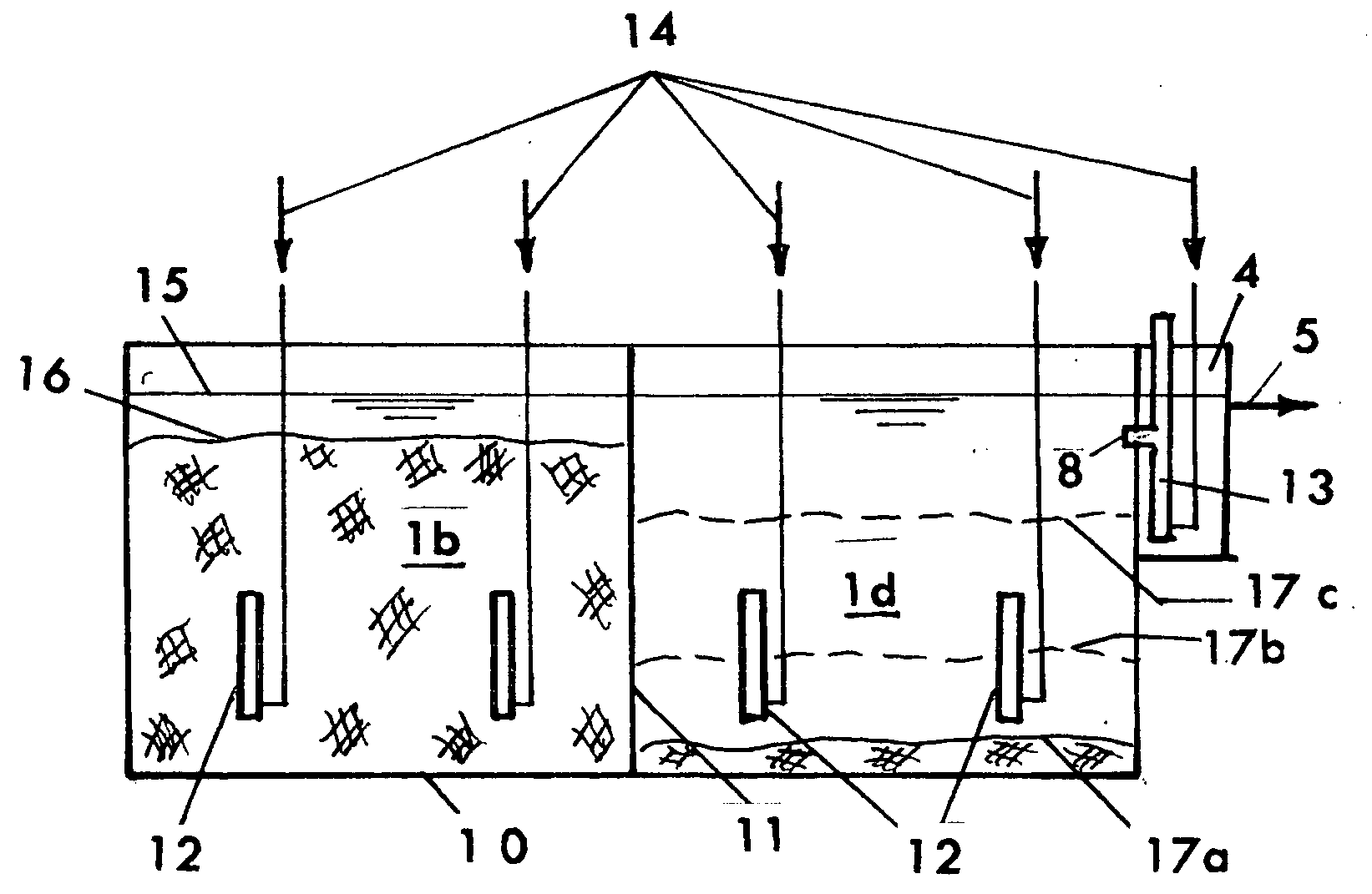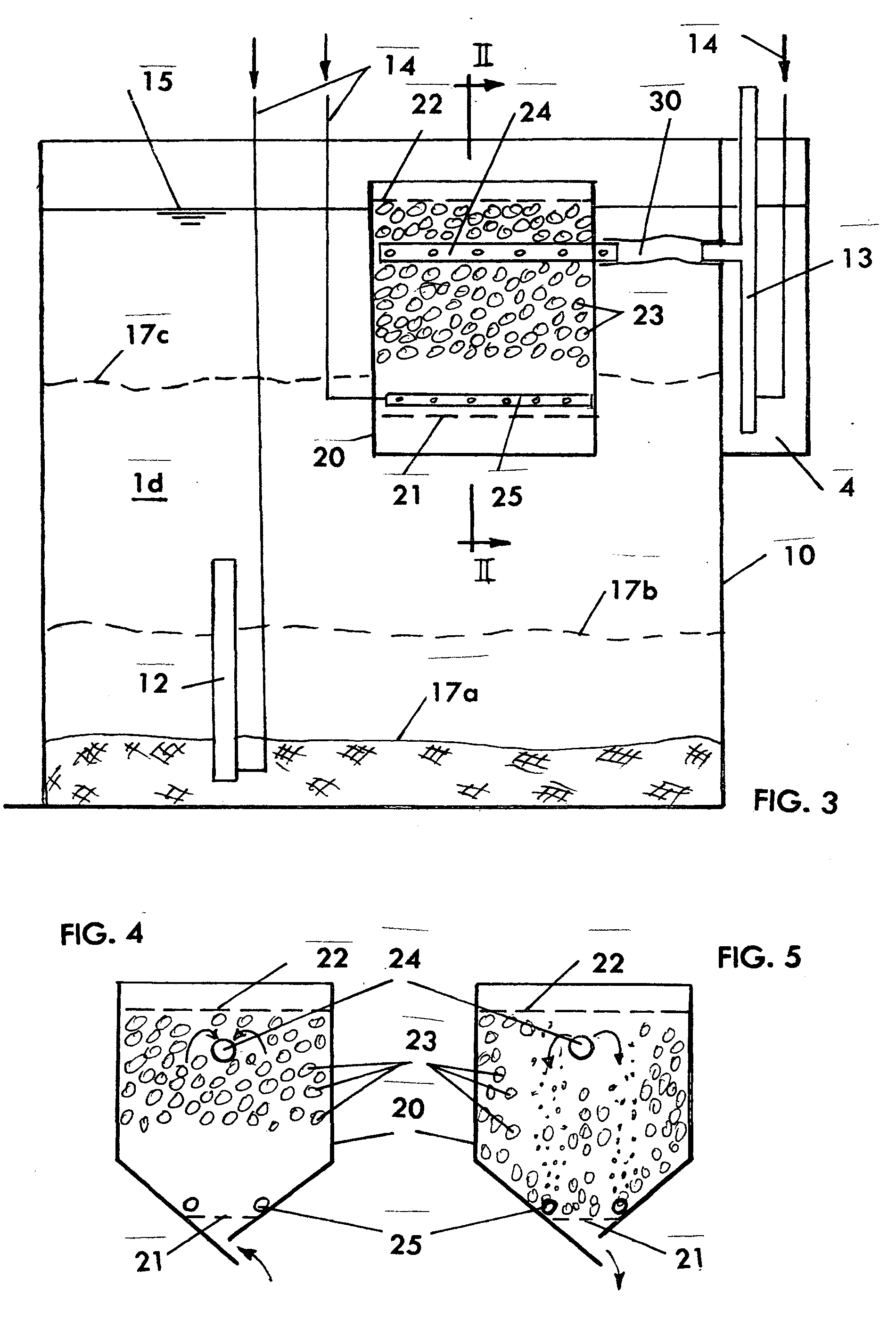Batch-continuous process and reactor
a technology of continuous process and reactor, applied in the direction of chemistry apparatus and processes, multi-stage water/sewage treatment, water/sludge/sewage treatment, etc., can solve the problems of complex operation, inability to use reliable time dependent control, and inability to use probes for measuring efficiency
- Summary
- Abstract
- Description
- Claims
- Application Information
AI Technical Summary
Benefits of technology
Problems solved by technology
Method used
Image
Examples
Embodiment Construction
[0023] As an example of the process, a biological wastewater treatment process is considered herein.
[0024] Referring now to FIGS. 1 and 2, there is shown the basic system for conducting the present invention. The system includes a tank 10 with a baffle (inside wall) 11. The tank is divided into zones 1a, 1b, and 1c defined above as predominantly mixed (or contact) zones, and 1d representing predominantly unmixed zone. The top of the water is shown by line 15. Zone 1a may be at least periodically mixed by a propeller mixer 8 which simultaneously moves and recirculates the contents of the tank as shown by arrows. Other means for mixing and propelling can be used, for example,: pumps, airlifts. Design of such means presents no problems to those skilled in art. Lines 3 and 5 are respectively the influent and the effluent lines The influent line 5 is connected to an effluent box 4. Zone 1b may be anaerobic zone with considerably dense sludge at concentration up to 20 to 30 g / L. This zon...
PUM
| Property | Measurement | Unit |
|---|---|---|
| concentration | aaaaa | aaaaa |
| oxidation-reduction conditions | aaaaa | aaaaa |
| time | aaaaa | aaaaa |
Abstract
Description
Claims
Application Information
 Login to View More
Login to View More - R&D
- Intellectual Property
- Life Sciences
- Materials
- Tech Scout
- Unparalleled Data Quality
- Higher Quality Content
- 60% Fewer Hallucinations
Browse by: Latest US Patents, China's latest patents, Technical Efficacy Thesaurus, Application Domain, Technology Topic, Popular Technical Reports.
© 2025 PatSnap. All rights reserved.Legal|Privacy policy|Modern Slavery Act Transparency Statement|Sitemap|About US| Contact US: help@patsnap.com



